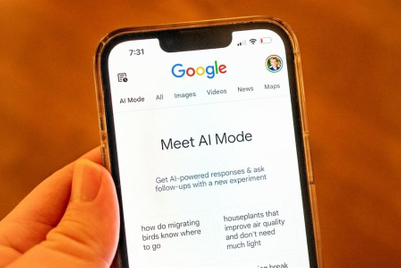
Today, many retailers struggle to define the role of physical in their future. The rush of investment in online has made every product accessible, every purchase seamless. But consumers are also looking for something to be a part of. In this new world order, what is the relevance of the bricks-and-mortar store?
In the race towards frictionless convenience, many retailers have been left without real purpose. Brands are meeting customers’ functional needs, but often fail to tap into their deeper human needs—those of comfort, belonging, independence and progress.
That’s where physical stores can play a role. Physical can reintroduce the ‘positive friction’ that enriches customers’ lives, and help them achieve something bigger than a simple transaction.
Consider the beauty industry. Beauty brands are not only enjoying continued success in physical locations—in China, the penetration rate of beauty stores increased by 6% over the past year, according to Nielsen—but also increasingly looking for ways to expand their physical footprint.
Sephora recently opened a flagship store in Hong Kong, with plans to roll out seven more over the next three years. Chinese beauty platform Rosilolly aims to open 3,000 outlets by 2020, looking to capture the 80% of beauty sales in lower-tier cities that happen offline (China Daily). What’s behind this enthusiasm, and how are beauty brands creating meaningful experiences that get customers to cross the store threshold?
1. They celebrate individuality through personalized experience
Beauty is not one size fits all. As representation in the industry has diversified in recent years, consumers are calling out for experiences tailored to their own needs, that reflect their personal beauty. Last year, SK-II debuted its highly personalized Future X smart store in Tokyo, which diagnoses individual issues via a skin scan and provides custom content throughout the store through facial recognition. Although in-store personalization is not new, technology today means that brands should deliver a tailored experience proactively, to surprise and delight customers.
2. They empower self-care through service
Self-care is now a $10 billion business globally (LA Times). Customers are investing more in nurturing their mental and physical well-being. In response, beauty brands are evolving from product to service providers, dedicating spaces for customers to be nurtured. In New York City, CAP Beauty has rolled out a spa concept aimed to beautify customers inside and out. Beyond facials, the spa offers holistic health consultations focused on nutrition and herbal remedies so that customers can become the best versions of themselves. The key takeaway for brands? Don’t be afraid to flip the balance of product and experience, to anchor your store around a unique service proposition.
3. They imagine and create a better world
Great products will only get a beauty brand so far. Today’s socially conscious customers demand brands stand for something more. The store is now the frontline where the fight for inclusion, diversity, sustainability and other important issues takes place. Lush has been leading the charge for more environmentally friendly beauty through its Lush Labs store in Tokyo, which is completely free from packaging. Likewise, Sephora has dedicated its store spaces to instilling confidence in underserved communities, holding classes for cancer survivors as well as transgender and non-binary individuals. The lesson here is to put physical stores to work towards a greater purpose—to go beyond selling and inspire a vision for the future.
4. They help people build knowledge and master new skills
Beauty store visits are no longer just fueled by purchase need, but by curiosity. The “skintellectual” movement has meant that customers now want to learn more about the products and ingredients they use on their skin, as well as how to use them most effectively. As a result, beauty brands are now utilizing their stores as campuses where customers can learn more about how to care for their skin and hone their makeup skills. At Sephora’s Beauty TIP (Teach, Inspire, Play) stores in the US, workshop spaces are the central focus, offering group classes, individual consultations and digital education stations. It’s time that brands recognize the industry expertise and insider knowledge that they have to offer, and share that with customers in the physical space.
5. They drive social connection and unite brand communities
For the social shoppers of today, shopping for beauty is all about connection. Successful brands are giving their stores a relationship-broker role, enabling peer-to-peer inspiration, empowering sharing and linking customers with key opinion leaders through technology. In Shanghai, MAC has created an Experience Centre for Gen-Z shoppers where the primary touchpoint is WeChat, making the customer experience inherently social. Meanwhile, Sasa Supreme in Hong Kong has created a dedicated area for daigou (cross-border sellers) to livestream to customers, facilitating peer-to-peer commerce. Ultimately, it’s the sparking of conversations and cultivation of meaningful relationships that keeps customers engaged in the long run.
The beauty industry knows the importance of physical and applies the benefits behind its products to its stores. It is a success story for how compelling experiences can give real meaning to offline retail.
The mission for brands in any sector today is to define the right formula of experiences to resonate with their customers. The store is your canvas, what experience will you create today?
Emily Cheng is brand and experience strategist at Fitch Hong Kong.





.jpg&h=334&w=500&q=100&v=20250320&c=1)
.jpg&h=334&w=500&q=100&v=20250320&c=1)
.jpg&h=334&w=500&q=100&v=20250320&c=1)
.jpg&h=334&w=500&q=100&v=20250320&c=1)
.jpg&h=334&w=500&q=100&v=20250320&c=1)




.jpg&h=268&w=401&q=100&v=20250320&c=1)


.jpg&h=268&w=401&q=100&v=20250320&c=1)

.jpg&h=268&w=401&q=100&v=20250320&c=1)
.jpg&h=268&w=401&q=100&v=20250320&c=1)